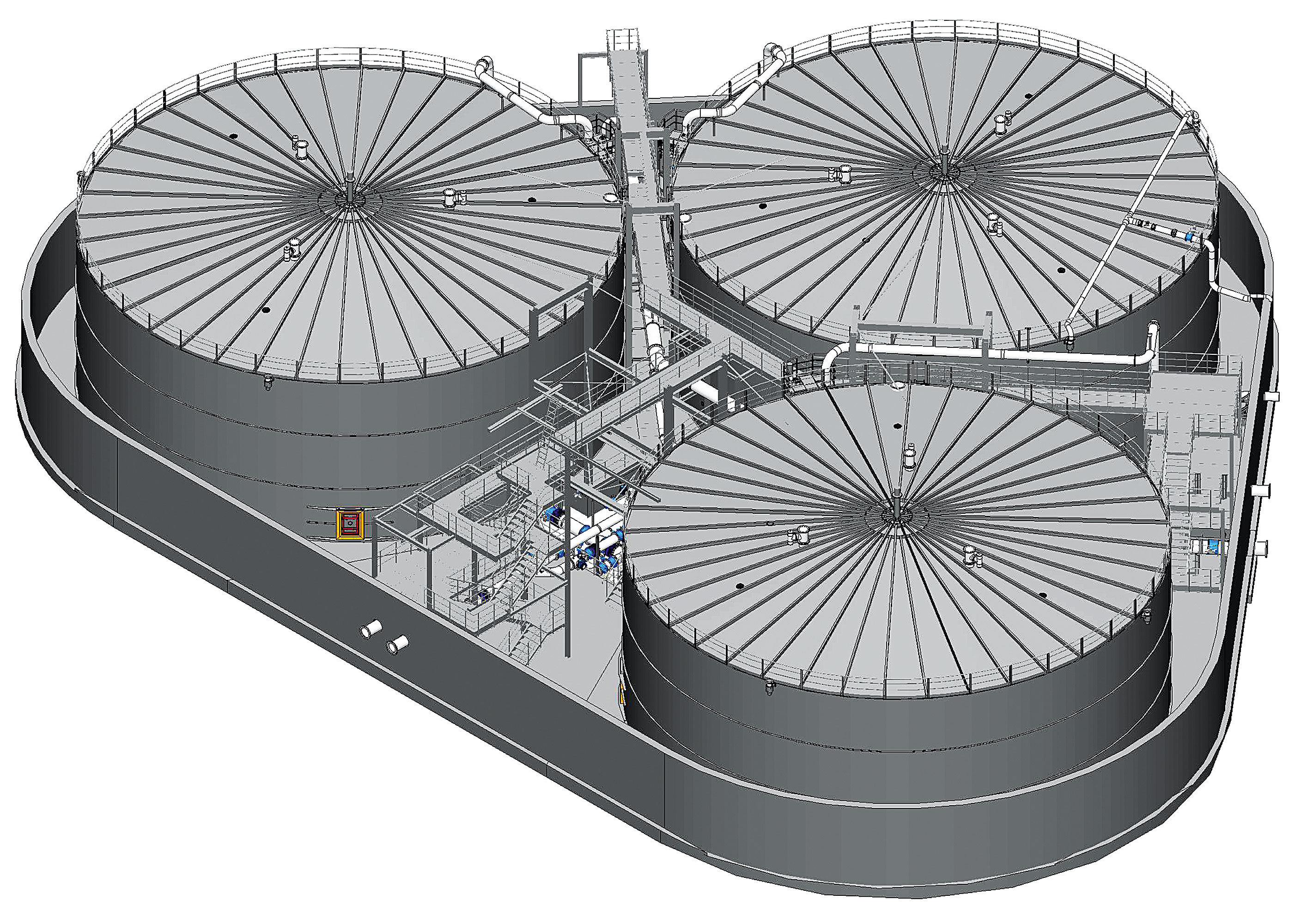The facility is an example that stainless steel tank systems can also be realised very well and economically on this scale. The innovatively designed building with its Corten steel cladding nestles gently around the three round system tanks and blends elegantly and representatively into the urban development area.
In order to save material for the construction of the building, the steel supporting structure was statically optimised, designed with the smallest possible cross-sections and with three stainless steel pillars arranged centrally in the stainless steel tanks to support the roof, which is a novelty for stainless steel drinking water storage tanks. The design of the tank roof construction, the manufacturing concept for the construction of the stainless steel tanks and in particular the automatic cleaning system were further developed specifically for the Kuhberg plant.
The centrepiece of the new drinking water storage facility is formed by the three stainless steel tanks, each with a volume of 4,000 m³, a diameter of 24.8 m and a shell height of 8.8 m. They were manufactured using Hydro-Elektrik GmbH's winding process, which has been successful for many years and has been continuously further developed.
The automated cleaning of the three large drinking water storage tanks was an important argument for the decision in favour of stainless steel HydroSystem tanks. SWU decided in favour of automated cleaning of all internal surfaces such as the roof, shell and floor. The high-pressure nozzles, from which the cleaning water is sprayed at high speed and at close range onto the surfaces to be cleaned, ensure good wet-mechanical cleaning. The surfaces are not only wetted, but also cleaned of potential build-up, just like with a high-pressure cleaner. The operator can control the automated process from the control platform when the container is closed. This significantly reduces the effort required for tank cleaning compared to concrete drinking water storage tanks.
A comparative life cycle analysis carried out on the Kuhberg project showed that the solution with stainless steel tanks saves CO2 equivalents compared to conventional solutions. The analysis was carried out within defined system limits and in accordance with DIN EN 15804.
Europe's largest stainless steel drinking water reservoir in operation

Back
